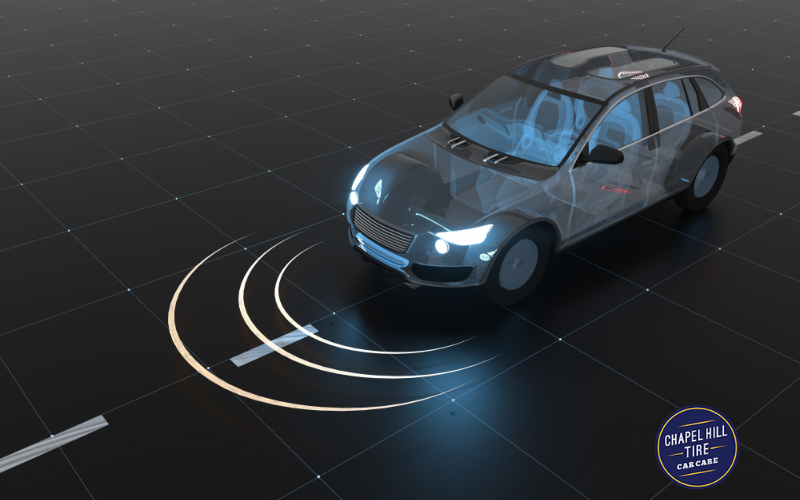How Does Tire Tread Depth Affect Braking Distance?
Auto Shops Located in: Chapel Hill, Durham, Taleigh, Apex, and Cary North Carolina

Your tires are essential to your vehicle’s safety and performance on the road. One of the lesser-known implications of low tire tread depth is braking inefficiencies. With this, there is one key understanding for driver safety: the lower your tire tread, the more distance your car will need to stop.
So, when a fender bender or a car accident happens, many drivers blame their brakes. However, we recommend taking a look at your tires. The local mechanics at Chapel Hill Tire are here with insight.
How Do Brakes Work?
To understand the effects of low tire tread on braking distance, it is essential to understand how brakes work. When you press your foot against the brake pedal, you set an entire system into motion:
- Using powerful hydraulics (provided by brake fluid), your brake pads press against your metal rotor—which is connected to your tires.
- As the rotor slows, your tires will also start to slow down.
- With help from the rotors, your tires use friction against the road to stop your car.
This system depends on a variety of healthy vehicle parts, including your braking fluid, brake pads, rotors, and tires. However, tires are often overlooked as a braking component—despite the essential role they play in this process.
Factors that Impact Braking Distance
How long does it take your car to fully stop your vehicle on the road? We all know that NC law (Statute Section 20-152) requires you to keep a full vehicle distance between you and the car in front of you. However, many cars need more time than that to stop. Some factors that impact your stopping time/distance include:
- How fast your car is going
- Your brake pad and rotor conditions
- The kind of tires you have
- Your reaction time to the need for braking
- Whether the road is flat or inclined
- How old and oxidized your tires are
- Your brake fluid level and quality
- How inflated your tires are
- Tire brand and quality
- Whether the road is wet or dry (and how heavy or long it has been raining)
- And (as you might have guessed) your tire tread depth
- The amount of force you apply to your brake pedal
Let’s take a closer look at how tire tread depth impacts braking performance.
The Impacts of Tread Depth on Braking Distance
The legal limit of tire tread depth is 2/32 of an inch, which drivers can check with their tread wear indicator bars or a manual tread inspection. Meanwhile, new tires often come with 10/32 to 11/32 inches of tread depth. While all tires within this tread depth range are legal, the braking performance ranges drastically.
Tire Tread Depth - Distance Needed to Fully Stop
10/32 Inches of Tread - Depth 234 Feet to Stop
6/32 Inches of Tread - Depth 253 Feet to Stop
4/32 Inches of Tread - Depth 282 Feet to Stop
2/32 Inches of Tread - Depth 356 Feet to Stop
So while 2/32 inches of tread depth might be legal, it can take your car roughly the length of a professional football field to stop—making it hard to prevent accidents.
This data comes from Hunter Engineering Company—who’s advanced equipment our mechanics trust and use daily. In the collection of this data, the road conditions are wet and flat. The professional driver is going 60 miles per hour.
Find New Tires Near Me at Chapel Hill Tire
Your car safety is our priority here at Chapel Hill Tire. Whether you need new tires, a tire inspection, a patching service, a vehicle safety inspection, new brake pads, or any other car service, our mechanics are here for you.
We proudly serve the greater Triangle area with 10 locations across Durham, Cary, Raleigh, Chapel Hill, Carrboro, and Apex. Our local mechanics invite you to make an appointment or give us a call to get started today!
We’ve got all your automotive repair needs covered.















